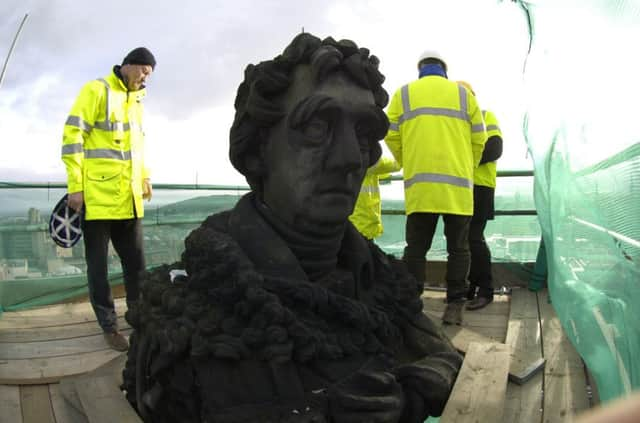Adam Ramsay: The real story behind the Melville monument


The sign marked the spot where, on 15 November 1884, the Berlin Africa Conference carved up that continent among the imperial powers of the day.
“Africa and African people were present at the conference only through their opposition to European politics”, it tells passers-by.
Advertisement
Hide AdAdvertisement
Hide AdOur history is not something for which we should be blamed or credited. But it does help to shape us. And so how we understand our past is key to how we build our future.
In Germany they have, for obvious reasons, been forced to become good at that. Here in Edinburgh, less so.
Perhaps the most stark example is the city’s biggest statue. In the middle of St Andrew Square, atop a huge plinth, is a statue of one Henry Dundas, Viscount Melville.
The man was a vital figure in Scotland’s history, known at the time as “King Harry the Ninth”, “The Grand Manager of Scotland” and, most simply, “The Great Tyrant”. Dundas’ role in the late-18th century politics is multifaceted, and it would be unfair to judge him by today’s standards. But even by the measure of his time, he is a hard man to like.
Advertisement
Hide AdAdvertisement
Hide AdHe was the government minister who fought off William Wilberforce and the movement to end the transatlantic slave trade, delaying its abolition by 20 years.
He used the Black Watch to crush a rebellion against the Highland Clearances and oversaw the transportation of Thomas Muir and the Scottish radicals who demanded the right to vote (and are also represented in a notable point on Edinburgh’s skyline).
The case was seen as such an outrage at the time that it inspired one Mr Robert Burns to write Scots Wha Hae’in protest.
Dundas was said to be key to the expansion of the British empire into India and the West Indies, through “pillage and patronage” and, described by Thomas Paine as ‘a man rolling in luxury at the expense of the nation’.
Advertisement
Hide AdAdvertisement
Hide AdHe was the last person impeached from public office in the UK, accused of embezzling public funds (though, ultimately, he got off).
Does this man deserve our city’s biggest statue? Perhaps that question is irrelevant. He already has it and while I might like to see it removed to a park somewhere and have its plinth topped instead by Chrystal MacMillan or Jenny Geddes and her stool, such a manoeuvre is a long way off.
But in the meantime, there is something much simpler we could do. At the moment, the Melville Monument’s plaque, at the west entrance to the square, tells nothing of the man’s deeds.
On Thursday, I will present a petition to the council, asking for another plaque (for which I will happily raise the funds), which gives a fuller and more honest account of his history.
Advertisement
Hide AdAdvertisement
Hide AdThe people of Edinburgh today are not responsible for Dundas’ crimes. But we do live in a city enriched by slavery and violent imperialism. And as the display in Berlin implied, in order to bear united responsibility for our future, let’s at least learn to look the past in the eye.
Adam Ramsay is a Green activist and former Edinburgh University Student Association President